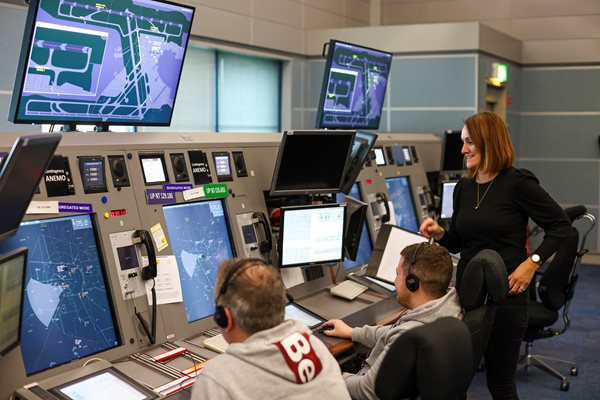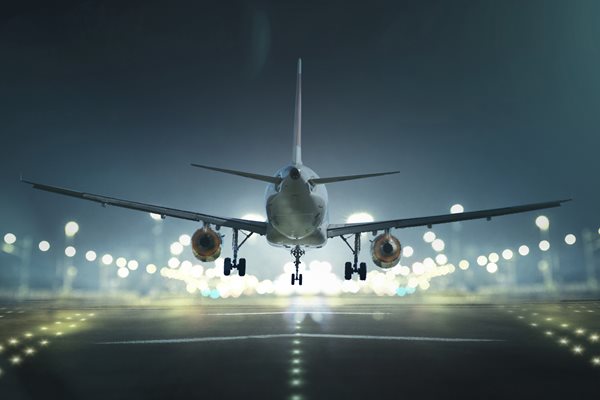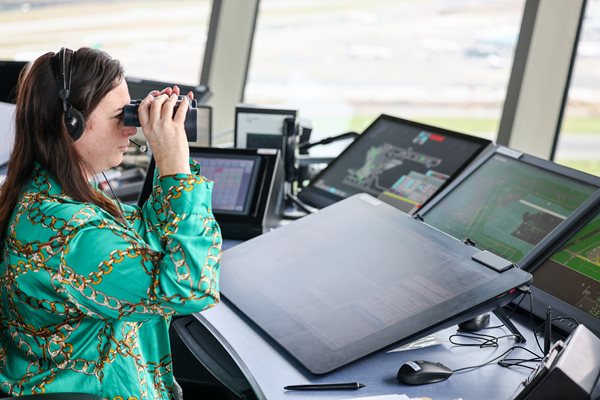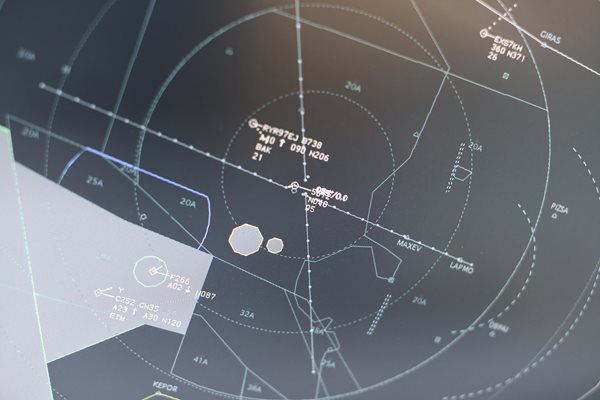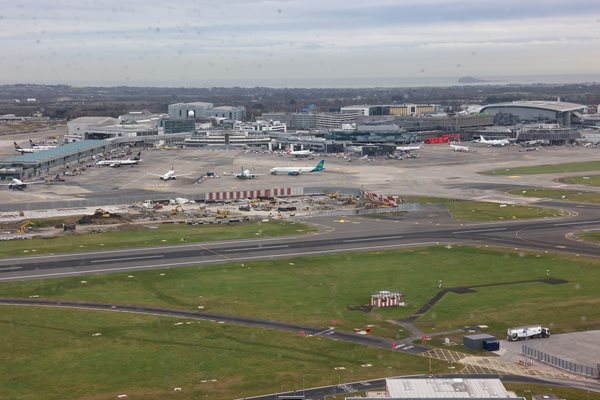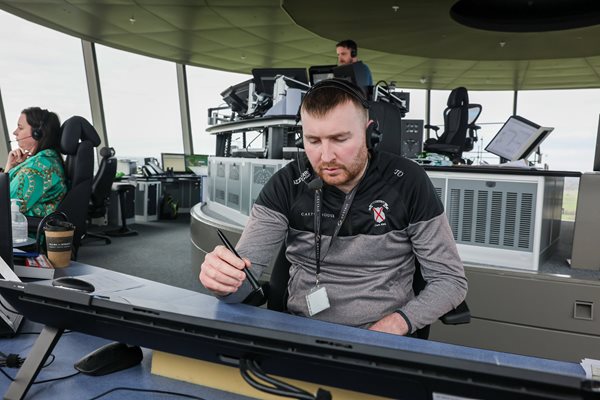Tower ControlTower control, also known as aerodrome control, is in many ways the most visible part of air traffic control. AirNav Ireland is responsible for providing tower control at the three State airports, Dublin, Shannon and Cork. From the tower, the controller is responsible for all aircraft operating within the airport control zone and on the ground at the airports. Before departure, aircraft must file a flight plan which details important information such as the destination, route and preferred altitude. When ready for departure, the pilot will contact the control tower. Start up and taxi clearance will be issued by the surface movement's controller while it's the responsibility of the air movement's controller to issue take off clearance. Once airborne, the aircraft contacts the appropriate area radar controller. |
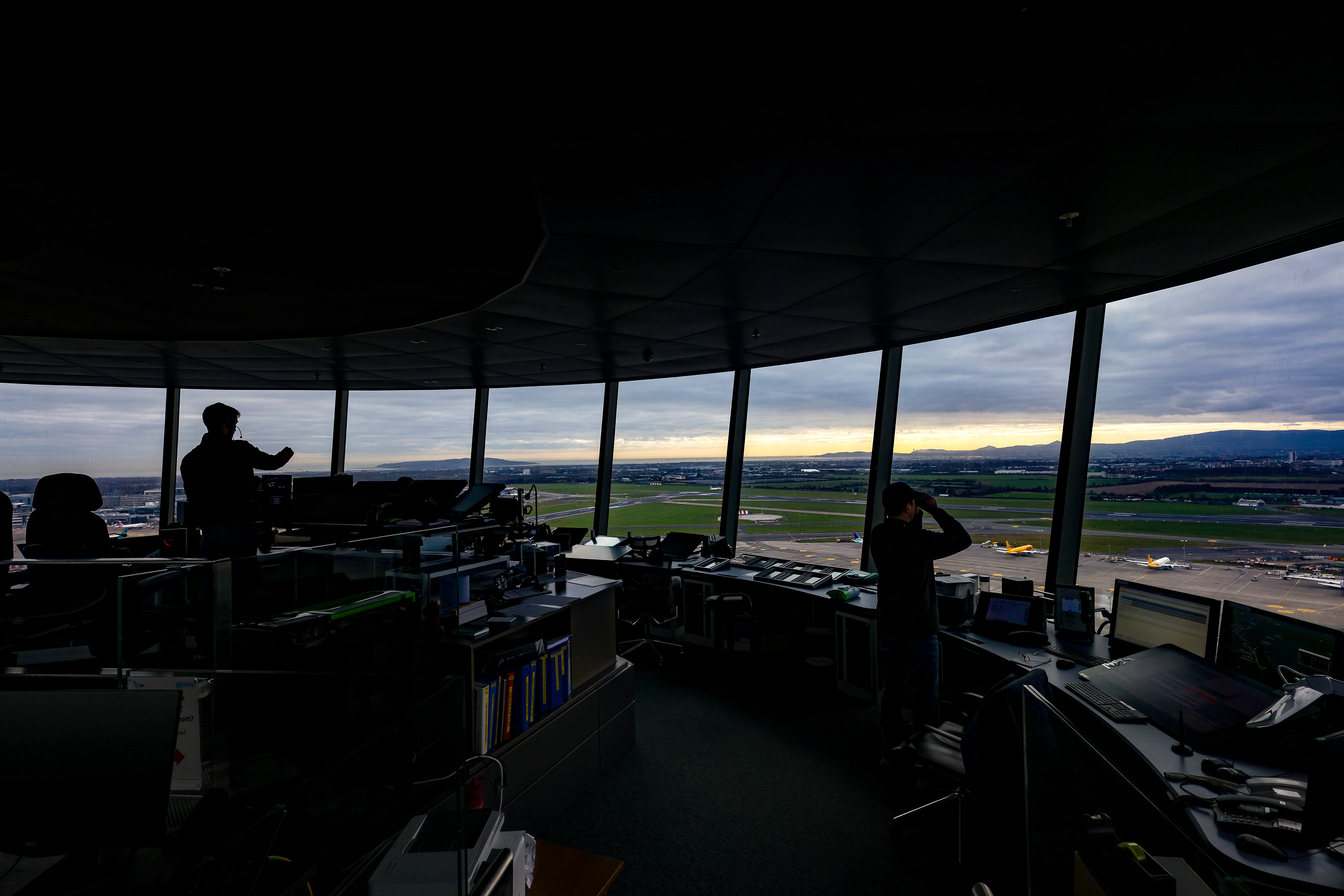 |
Approach Radar ControlThe approach radar controller is responsible for arriving aircraft within approximately 30 - 40 miles of the aerodrome. They sequence traffic for arrival and line them up with the runway. The standard separation is 5 nautical miles, however, under certain conditions, 3 nautical miles separation is permitted. This reduction in separation under certain circumstances is in keeping with international standards at busy airports to increase the efficiency and capacity of these airports. This reduction in separation is permitted in the airspace in the vicinity of Dublin Airport. The controller uses techniques such as speed control and changes in altitude and direction (radar vectoring to ensure separation) and the correct sequencing of arriving aircraft). Innovative procedures such as Point Merge are also used to good effect. |
.jpg?lang=en-IE) |
Area Radar ControlAs in approach radar control, here too controllers work on radar, but on a bigger range. Airspace is like a giant jigsaw - as a puzzle consists of many individual pieces, the airspace is divided into different sectors which are assigned to individual radar positions. As an individual area becomes busier, more radar positions are opened to reduce the workload on individual controllers. Each sector also has a sector capacity to ensure that individual controllers do not become overloaded. Area radar controllers in Dublin handle traffic up to 24,000 feet while in Shannon they operate up to 66,000 feet. |
.jpg?lang=en-IE) |

